Your Refund Is An Opportunity Cost
 Tax season is now over and if you get a refund from the government you’ve either already received it or know how much you’re getting.
Tax season is now over and if you get a refund from the government you’ve either already received it or know how much you’re getting.
I’ve written before about why getting a tax refund isn’t an optimal financial move. When you get a refund from the government that means you paid too much in tax during the year. It’s an opportunity cost.
That money was being taken from your paycheck and held from you, and inaccessible in case you needed it. It was also being eroded by inflation since it wasn’t invested.
Lastly, you wouldn’t give a bank an interest free loan, so why would you give one to the government?
If you got a $6,000 tax refund this year it’s the same as buying a CD last year that pays nothing. They take your money, hold it from you, and give the same amount back a year later.
The market for CD’s that pay 0% isn’t good for a reason. But wait, they give back less because inflation happened last year. In 2018 that means the money lost 1.9% of it’s value.
But historically inflation has averaged about 3.22%.
It seems the majority of personal finance bloggers defend the practice of getting refunds. Many of those same bloggers write, very eloquently I would add, about how to save money and be frugal in life. Tips on how to save $50 here, or $100 there.
Some of these same bloggers have written online that the “interest free loan thing” doesn’t amount to that much. I’m now going to show the numbers that it does matter, and when you get a refund you’re losing more money than you think.
Recently I saw a back-forth about this issue on Twitter. One blogger said that he usually gets about a $6,000 tax refund and he was upset that it’s smaller this year. So I’m going to use the scenario of someone who gets $6,000 back in a tax refund.
Break It Down
Let’s assume you’re paid twice a month at your job. So the $6,000 extra the government took from you that they shouldn’t have comes out to $250 per paycheck ($6,000/24). To keep the charts below smaller I’m going to show what happens monthly. So Uncle Sam is taking $500 too much from you every month (2 paychecks), and giving you back $6,000 the following spring.
The stock market averages 7% historically. Inflation averages 3.22% historically. I’ll use these two rates to show how money grows when invested and erodes when it’s doing nothing as they are standard averages to use over time.
Below you see two scenarios. In the first (Money Invested) you keep your $500 per month and have it automatically deposited in your VTSAX, which averages 7% annually. When you break down a 7% annual return it comes to .5833% monthly. You never see the money, it’s automatically invested.
In the second (Money Doing Nothing In Uncle Sam’s Hands) you give your $500 to the government monthly. It sits and does nothing, it’s getting eroded by inflation. At an annual average of 3.22%, inflation averages .26833% monthly. You never see the money, it’s automatically taken.
In both cases your net take-home pay is the same. In one instance you auto-pay yourself into VTSAX (or whatever you like), in the other case you auto pay Uncle Sam (more than you should).
| Month | Money Invested (7% annual Avg) | Money Doing Nothing In Uncle Sam’s Hands (-3.22% annual avg) | Difference |
| January | 500.00 | 500.00 | 0.00 |
| February | 1002.92 | 998.66 | 4.26 |
| March | 1508.77 | 1495.98 | 12.79 |
| April | 2017.57 | 1991.96 | 25.60 |
| May | 2529.34 | 2486.62 | 42.72 |
| June | 3044.09 | 2979.95 | 64.14 |
| July | 3561.85 | 3471.95 | 89.89 |
| August | 4082.62 | 3962.63 | 119.99 |
| September | 4606.44 | 4452.00 | 154.43 |
| October | 5133.30 | 4940.06 | 193.25 |
| November | 5663.25 | 5426.80 | 236.45 |
| December | 6196.28 | 5912.24 | 284.04 |
Difference? $284.04
But wait, we’re not done! You actually don’t get your $6,000 back January 1st. You have to wait until at least February 1st to file taxes and even if you file right away the earliest you’ll likely see your money is around March. So your money keeps getting eroded by inflation into the next year. Let’s see how the numbers are actually worse in reality.
So when you get a $6,000 refund inflation has devalued that money to $5912 by December 31st. Now let’s see how inflation erodes that even more calculated out until the following May. That’s when you’d finally see it if you file on April 15th and get your refund late.
This chart shows your invested money from the previous year as it keeps growing (but not adding anymore). It also shows what you have left from your $6,000 as the government still keeps it from you.
| Month | Money Invested (7% annual Avg) | Money Doing Nothing In Uncle Sam’s Hands (-3.22% annual avg) | Difference |
| December | 6196.28 | 5912.24 | 284.04 |
| January (following year) | 6232.42 | 5896.38 | 336.05 |
| February | 6268.78 | 5880.56 | 388.22 |
| March | 6305.34 | 5864.78 | 440.56 |
| April | 6342.12 | 5849.04 | 493.08 |
| May | 6379.12 | 5833.35 | 545.76 |
Final difference if you get your money back in May?
$545.76
Now some may still say “eh, $546 bucks isn’t much” To me, those people are out of touch with a reality in which the average median household income in America is $60,000. I know if I have an unexpected $546 bill, I’m pissed. Really pissed. But if I could manage to save $546 on an item – perhaps an appliance, I’m ecstatic!
And some of these same people blog about saving $50 on a grocery bill.
$546 is not an insignificant amount of money friends. Not in the world I live in.
The opportunity cost of letting the government hold your money hostage from you is not trivial. And if you think $546 is a lot, in years where the market has big gains such as 2017 (up 21.17%) the difference would be much much greater!
All you have to do to avoid this is adjust your W4 and get more in your paycheck now. I saw one blogger say “But that forces me to make 24 good money decisions with the extra money instead of just one when I get a refund.”
Solution – have the extra money auto-deposited into your VTSAX account, and you’re done. It only takes one good decision to fix this. Auto-deposit.
And here’s an all too common reality about refunds – it only takes one weakness to blow the $6,000 refund and not save it. “Dirtbikes are fun, spring is here….”
401K Implications
If you claim you can’t afford to max out your 401k, but still get a tax refund every year, that’s called “mixed messaging”. You can obviously afford to lose more from each check than you need to since you’re giving extra to the the government and still living on your take home pay.
All you have to do is adjust your W4 and put the extra money in your 401K.
Treat Your Investment Like A Refund
If you count on a tax refund every spring from the government to go on a vacation, you can get the same benefit by setting up an account at CIT Bank (currently 2.45% APY) or Ally and just have the excess taxes the government is taking from every check put into a high yield savings account.
That way it’s a bit more liquid than selling shares of VTSAX. It probably won’t earn as much but you’ll still come out way ahead. Then when you want to go on vacation you simply use the money. You don’t have to wait for a refund, and you have hundreds of dollars more because it’s been invested.
I’m not naive. I realize that many who defend tax refunds will still not be swayed by seeing these numbers. Sometimes people just get comfortable doing something and no amount of data or facts will change their mind. I can’t say I’ve never done that before. Personal finance is personal after all and I get it.
But I hope it’s opened your eyes to adjust your W4 withholding and at least try to get less of a refund to take advantage of your own money and invest it during the year.




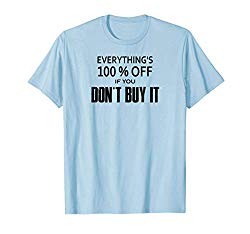
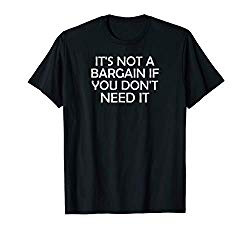

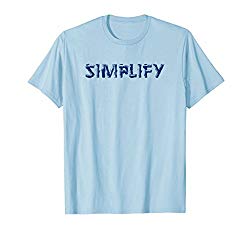




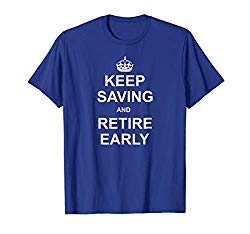







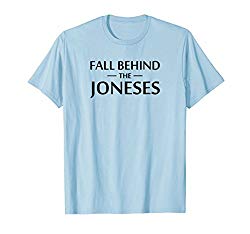






















Good article.
In the UK, you can invest in a tax advantaged scheme called VCTs. They come with 30% tax relief (invest £10,000 and get £3,000 tax back). You can invest money in different funds and often they are open to allowing you to invest money now in next tax year’s allotment – meaning you can benefit from tax relief for the year ahead as well as dividends now.
However, the take up is low with most people leaving VCTs to the last minute – one fund had 95% of people applying for 2018/19 and only 5% forward investing for 2019/20.
I’m sure it’s the same everywhere.
Those VCTs sound like a good deal, wish we had that!
Love it. Good post, AF. I hate giving Uncle Sam an interest free loan.
Amen!
Great breakdown of the opportunity cost because of a tax refund.
I was once of it those who was happy to get a refund. Now I am happy to owe uncle Sam at tax time (which even accentuates the above opportunity cost numbers as I have instead taken an interest free loan FROM uncle Sam instead of giving one)
I made the mistake back in my 20’s but learned quickly and have profited tens of thousands over others who get refunds!
Love the breakdown, Dave. The contradiction from folks who rant about saving pennies yet give the government free use of their money is kinda funny. If they have the discipline to save pennies, which arguably is harder work, it’s difficult to grasp not managing tax withholding better.
Anyone reading your numbers should be motivated to think differently. Well done.
It is weird right? Give up your $4 latte but then lose hundreds or more by letting your money rot in Uncle Sam’s hands for a year…
this is a good illustration about jumping over dollars to pick up dimes. we don’t pretend to optimize the dimes and pennies in the smidlap chateau but we do try and get the amount owed/refunded to near zero. for most regular employee types it just takes a decent understanding of the tax tables and about an hour to figure out the right amounts. i usually do this around this time of year once i have at least 10-12 checks to do the projections.
I wish I could get it closer to zero, but since the market goes up most years I don’t mind taking a small loan from the gubment and investing it. I realize that’s a leverage loan but I’m not doing it in massive amounts, so even in years where the market goes down like last year I can still pay it back easily. Which I did yesterday 🙂
oh, i almost forgot to add how well your readers would do if they chose the qqq index! go q’s!
I used to have a NASDAQ index back about 10 years ago in my IRA. Did okay until it didn’t. You like to live on the wild side more than me 😉
I definintely agree with this. I actually have typically got a refund, and I really want to optimize my taxes to be sure I don’t get one. Giving Uncle Sam an interest-free loan is a bad deal!
Yep, it’s an easy thing to change – good luck!
Wow! This difference is more significant than I realized. My dad always told me he didn’t believe in giving Uncle Sam an interest free loan, and now I can see why. While I understood to an extent what that interest free meant, your illustration is eye opening and proves my belief that even seemingly small amounts add up to large amounts over time.
The money adds up. In years where the market gains 20 or 30% like we’ve had in recent years the lost gains are in the thousands for many people!
Of course, you’re absolutely correct, Dave. I guess I should be happy that I had to pay ~$7k by 4/15, at least I was able to play with the government’s money for a year, right!? I didn’t intend to under-withhold by so much, but my retirement triggered some income which wasn’t taxed. I talked to my CPA, and I wasn’t at risk of a penalty, so I let it ride until 4/15. Still hurts, but your post makes me feel a bit better about the decision…
Ouch! I owe over $2k this year but won’t get penalized either. It’s no big deal when it’s all part of the plan, plus I get rewards points for paying it on my credit card!
Had to pay out taxes this year for the first time ever, after getting about $1,000 refunds the prior 3 years. It was only a couple hundred bucks, so no big deal, but I can tell you it’s a lot nicer to get something back instead of paying!
Now on the other hand, I think $1,000 or more is probably too much and inefficient as your post points out, but I’ll be managing my withholdings so I can get a slight ($100-200) refund instead this year. The opportunity cost would be peanuts in this case and then it’ll also cover whatever I owe for the tax preparation. Win win!
But even though the market went down last year that’s an odd year in the grand scheme. It goes up most years, which is why we’re in it. So it’s actually better to pay a small amount (or up to $1000) because you can invest the gubments money and make extra money on it during the year. When it comes tax time I use my emergency fund for the modest extra payment and then just replace it as I save more. That’s a bigger win 😉
I’m with you. $6,000 is a significant sum. If we’re talking under $1,000, then I wouldn’t sweat it too much.
This year, we owe about $1,500. That’s not bad at all.
Last year, I had to send $9,000 to the IRS and $5,000 to OR. Now, that was painful.
Yikes, sounds like you had some big time extra income last year so in the grand scheme that’s good at least. But I’m with ya, I aim to pay about $1k or so every year, although I often go over. But I’m making money on that loan from Uncle Sam most years. After doing this for almost 20 years I’ve probably profited tens of thousands.
It’s funny. I’m never one who advocates giving Uncle Sam an interest free loan. Yet here I am, going to expecting a five figure tax refund…
Crap happens right? It was a tough year to predict correctly with the new tax law. This year should be more predictable
I’m supposedly (I’ll believe it when it’s in my hands) getting a four-figure refund back, and I’m definitely annoyed. The only modicum of good news is that the IRS wasn’t holding the money the full year. I made two large payments in the 3rd and 4th quarter to make up for the fact that I’d just gone through a divorce and would be filing as single, which changed my tax burden. Just apparently not nearly as much as I thought it would.
I’m basing this year’s taxes (I’m self-employed, so I have to withhold my own taxes) on the amount I owed last year, plus a little to account for a small raise and a couple other things that will increase my income. I may still get a refund — I’m contributing more to the SEP-IRA than anticipated — but hopefully it won’t be nearly as big.
Being self-employed with inconsistent income makes it tough to nail things down I’m sure. Invest that refund 🙂
People just need to understand what refund is…it’s getting money back….your OWN money to begin with! And I get it too, some people out there whom do not wish to educate themselves financially simply use Uncle Sam as a savings tool because they may not trust themselves to save or invest.
It amazes me that the simple concept is so poorly understood.
Didn’t realize Vanguard had a direct deposit option – that’s a great tip! It avoids the chance that I’ll decide not to make a Vanguard contribution out of each paycheck (“just this once”) and it saves me a bunch of clicking around in bank websites to get it done. Awesome! Thanks!
You’re welcome!
Thanks, Dave, for spreading the gospel on not giving Uncle Sam an interest-free loan for the year.
I carry it even further:
I am within 3 years of retiring from a government job (yes, with a verrrrrryyyyy nice pension) and will be contributing the full ‘Special Catch-Up’ amount of $38,000 to my 457b account this year (I know,… I started investing for retirement a bit late, but have taken full advantage of the 50+ catch-up and will have maxed-out my contributions by the time I retire).
Anyway, I front-load my 457b payroll contributions so that the full $38,000 limit will be reached by June. The result is that my taxable income (and therefore federal and state withholding) is MUCH lower in the first half of the year. So, while the government still gets the same amount of tax over the course of the year, they get it MUCH later in the year; allowing me to invest it earlier and keep the ‘opportunity cost’ of those funds.
Well done – that’s next level “optimus maximus” stuff!